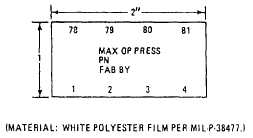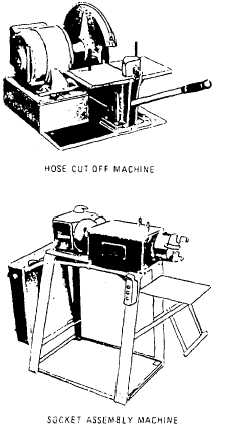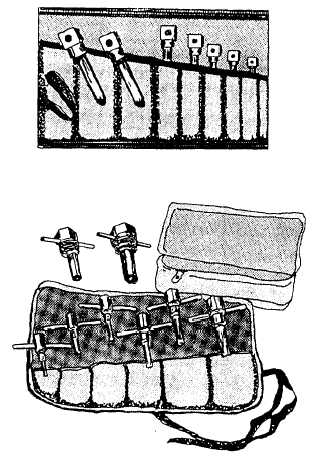Figure 5-6.—Hose assembly labels
Use labels (fig. 5-6) to identify hose assemblies
located in areas where a tag may be drawn into an
engine intake or where hose assemblies are covered
with heat-shrinkable tubing. Place the label 1 inch
from the socket and apply a 2 1/2-inch piece of clear,
heat-shrinkable tubing, MIL-R-46846, type V, over
the label and hose. Function and hazard labels can be
applied in the same manner as described above.
Fabrication
Fabricating hose assemblies from bulk hose and
reusable end fittings requires some basic skills and a
few hand tools. The skills required are the ability to
follow step-by-step instructions and to use the
required hand tools.
EQUIPMENT AND TOOLS.—Fabricating hose
assemblies is a function of intermediate- and
depot-level maintenance. The intermediate and depot
shops are equipped with hose fabricating machines
(fig. 5-7) and proof-test equipment. Each machine or
equipment is supplied with operating instructions.
The basic hand tools that are required to fabricate
hose assemblies up to 3,000 psi operating pressure are
a bench vise, a hose cutoff machine, open end wrench
sets, a sharp knife, slip joint pliers, an oil can for
lubricating oil, a marking pencil, a small paint brush,
masking or plastic electrical tape, a steel ruler, a
thickness gauge (leaf type), and a protractor.
Mandrels are special hand tools (fig. 5-8) that are
not required but are recommended for fabricating
hose assemblies. During hose assembly fabrication,
mandrels can be used to protect sealing surfaces,
support inner tubes, and guide fitting nipples into
hoses.
Figure 5-7.—Hose fabricating machines.
Figure 5-8.—Mandrel kits.
5-11






